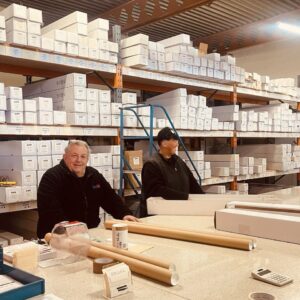The Process of Making Window Tint Films
Glass is everywhere – in cars, offices, homes – but on its own, it lacks control over heat, glare, and privacy. Window tinting films solve these issues, transforming plain glass into a high-performance surface that blocks UV rays, reduces energy costs, and enhances security. Yet few consider what goes into creating these films. Behind every roll of tint is a precise, multi-step process combining advanced materials, engineering, and rigorous quality control. From selecting raw polyester to applying specialised coatings, each stage determines the film’s durability, clarity, and effectiveness. Here’s an inside look at how these films are made.

Raw Material Selection: The Foundation of Quality
The process begins with selecting premium raw materials. Most window tinting films are based on polyester (PET), a durable, optically clear material with excellent tensile strength. Depending on the desired properties, manufacturers integrate additional components such as:
- Dyes – Used in dyed films to absorb light and provide colour variations.
- Metals – Found in metallised films to reflect heat and UV radiation.
- Ceramics – Nano-ceramic particles are incorporated for superior heat rejection without affecting visibility.
- Carbon – Provides enhanced durability, colour stability, and heat rejection.
Each material contributes to the film’s final optical performance, durability, and functionality.
Film Extrusion: Forming the Base Layer
The polyester undergoes an extrusion process, where it is melted and shaped into a thin, uniform sheet. This base layer forms the foundation of the window tinting film. Precision in extrusion is crucial to ensuring consistency in thickness and optical clarity, as even minor defects can affect the film’s overall performance.
Application of Functional Layers
To enhance performance, additional layers are incorporated. This stage differentiates various types of window films:
- Dyed Films: A colour-infused layer is added to absorb solar energy and reduce glare.
- Metallised Films: A micro-thin metallic layer is deposited to reflect heat and improve insulation.
- Carbon and Ceramic Films: Advanced films incorporate nano-sized carbon or ceramic particles to enhance heat rejection without compromising visibility.
Coating and Lamination for Durability
The film is then subjected to coating and lamination processes to improve strength and longevity. Adhesive layers are applied to facilitate installation and ensure long-term adhesion to glass surfaces. High-performance films also feature scratch-resistant coatings, extending their lifespan and maintaining clarity over time.
Dyeing and Metallisation (If Required)
Dyeing involves embedding pigments within the polyester structure to create a uniform shade. This process ensures that the colour remains stable over time without fading. Metallisation, on the other hand, deposits ultra-thin metal layers onto the film’s surface, enhancing its heat-reflective capabilities while maintaining visibility.
Curing and Rigorous Quality Control
Once all functional layers are applied, the film undergoes a curing process to stabilise its structure and improve adhesion between layers. Quality control is a critical step, involving extensive testing for optical clarity, colour uniformity, tensile strength, and heat rejection performance. Any defects detected result in the film being reprocessed or discarded.
Specialised Manufacturing: Nano-Ceramic, Reflective, Frosted, and Security Films
While the general production process remains consistent, specialised films undergo additional treatments:
- Nano-Ceramic Films: Infused with advanced ceramic nanoparticles, these films offer superior heat rejection while maintaining optical clarity and signal compatibility. Their non-metallic nature ensures they do not interfere with electronic signals, making them ideal for use in areas with high-tech equipment.
- Reflective Films: A high-reflectivity metal coating is added to provide maximum solar control and privacy. These films are excellent at reflecting solar energy, reducing heat buildup, and enhancing privacy by limiting visibility from the outside, especially during daylight.
- Frosted Films: A textured finish is applied to achieve decorative or privacy effects, commonly used for office spaces and bathrooms. Frosted films allow light to pass through while obscuring visibility, offering a balance of natural light and privacy.
- Security Films: Designed for enhanced protection, security films are typically thicker and are reinforced with layers of polyester and other materials. They are engineered to prevent glass from shattering upon impact, providing an added layer of security against break-ins, accidents, and natural disasters. Security films can be clear or tinted and are often used in commercial buildings, schools, and homes to strengthen windows against forced entry or extreme weather.
Final Processing, Packaging, and Distribution
Once approved, the finished film is cut into rolls of varying sizes and packaged for distribution. The packaging process ensures protection from environmental factors such as moisture and dust, maintaining the film’s pristine condition until installation.
Tintfit Window Films is dedicated to delivering the highest quality products at the most competitive prices in the UK, ensuring long-lasting solutions for your window tinting needs.